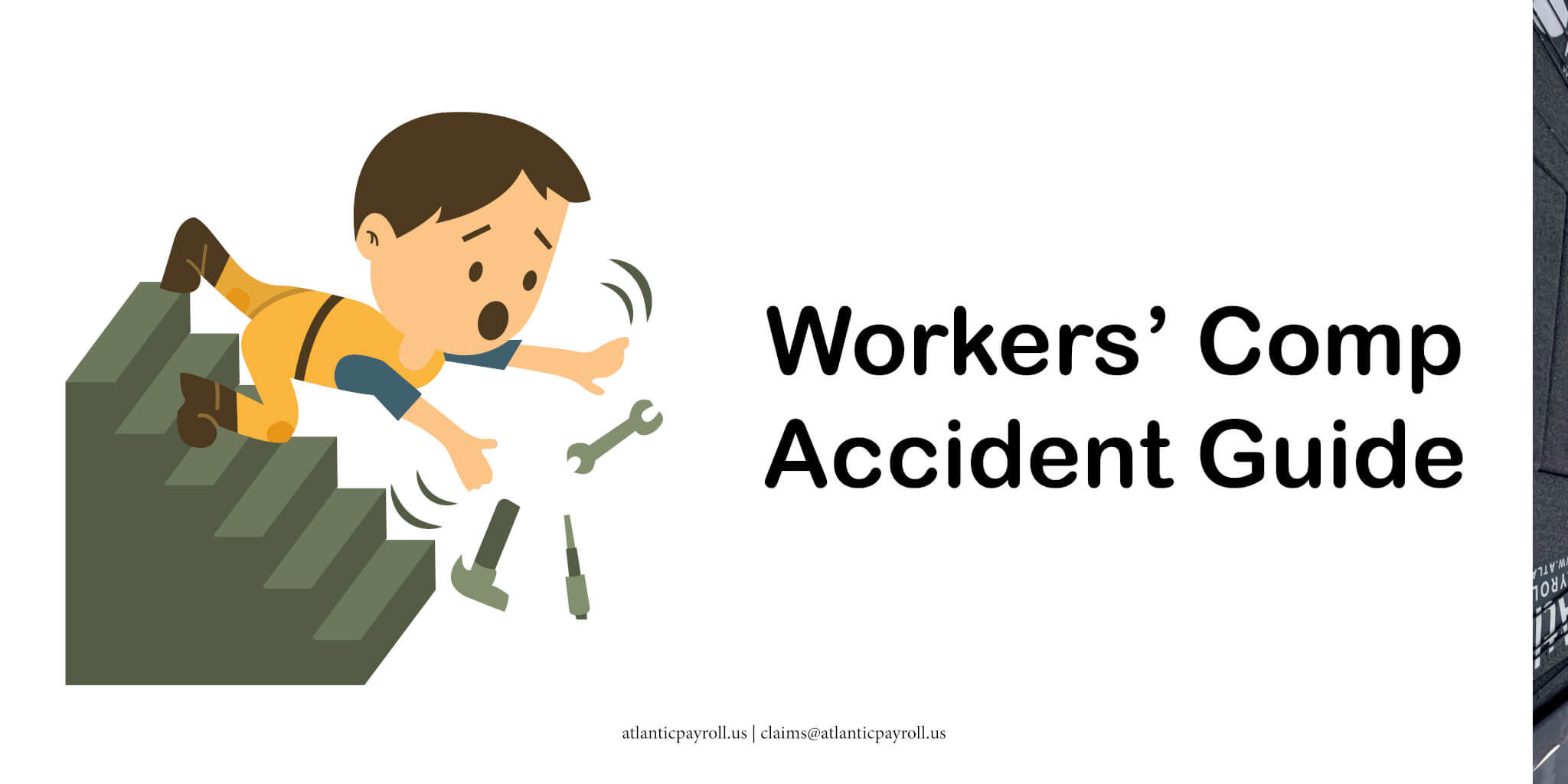What You Should Know About the Consolidated Appropriations Act of 2021
We’re 13 days into 2021 and a lot has already happened. Chances are you haven’t processed the end of 2020. Congress recently pass the Consolidated Appropriations Act of 2021, the CAA is long, really long at over 5,500. We have put together some of the highlights that you need to know when it comes to business, in particular what’s new with the PPP for 2021.
Here are some of the takeaways
- The definition of payroll cost officially includes group life, disability, vision, and dental insurance. The change to the definition is retroactive if you have not applied for forgiveness for PPP1.
- There is a one-page loan forgiveness application for loans valued at $150,000 or less.
- You may request a modification to the original PPP (PPP1) if you did not use the maximum amount of the loan.
-
The following expenses can be forgiven:
- Payroll Cost
- Covered mortgage, rent and utility payments
- Covered operation expenditures
- Includes software and cloud computing expenses related to HR and accounting.
- Coverage property damage cost
- Costs related to property damage due to public disturbances that occurred during 2020, not covered by insurance.
- Covered supplier cost
- Payments to a supplier pursuant to a contract/purchase order in effect prior to take out the PPP; if the expenditures were essential to the recipients operations at the time the expenditure was made.
- Covered worker protection expenses
- Cost to pay for PPE and other investments that would make your business compliant with government guidelines related to COVID-19 from March 1, 2020 to the end of the national emergency declaration.
-
- The expenses that can be forgiven are retroactive if you have not yet applied for forgiveness for the original PPP.
- You still must spend 60% of the loan on payroll cost to be eligible for forgiveness.
- The CAA recently clarified that business expenses may be deducted even if paid for with a PPP loan that is forgiven & excluded from income.
To apply and receive the new PPP you must have maxed out the original PPP. You must now have fewer than 300 employees and be able to show a 25% decrease in gross receipts in one quarter of 2020 compared to 2019 or a 25% from 2020 compared to 2019.
The CAA as it relates to the Families First Coronavirus Response Act
- The mandate to provide employees with paid sick and, paid family and medical leave for certain reasons related to COVID-10 has expired.
- It is now voluntary.
- You can still provide the leave mentioned in the Families First Coronavirus Response Act to employees. If you provide the leave from FFCRA you the employer will be eligible for tax credit through 3/3/2021.
- If your employee previously used leave in 2020 they are not currently eligible to use it in 2021.
3508EZ PPP Loan Forgiveness Application
See Title III- Continuing the Paycheck Protection Program and other Small Business Support
The above is not intended legal or financial/accounting advice. The summary is not complete and is subject change. For questions you should reach out to your banker/accountant or one of the entities responsible for the PPP, FFCRA, or CAA.
Copyright 2021
Copyright 2025
Why Atlantic Payroll Partners
The biggest payroll companies probably won’t have time for your business. It’s that simple, you’ll be a number. At Atlantic Payroll Partners, you’ll be the opposite. We’ll know more than your name; we’ll know the names of your children and their birthday’s as well. We will know you.
We’ve been helping Florida business by managing their payroll and providing workers' compensation quotes for ten years. We help keep payroll cost affordable by provided transparent PEO payroll quotes that allow you to plan your budget accordingly. Like the big payroll companies, you can manage your payroll and payroll timekeeping with us, while reaping the benefits of PEO risk management.
Thinking about payroll outsourcing can be scary. Make sure you know what to expect from payroll outsourcing providers; to make the best decision for your business. In addition to offering payroll, and workers' comp quote we offer: Human Resource consultations, Accounting services, and benefits such as, 401ks and Healthcare plans.
Updated 10/21/2021
As of 9/30/2021 the government is no longer providing a credit for paying an employee while they are ill with Covid or taking care of someone with Covid.
Updated 1/13/2021
As of 12/31/2020 the mandate that required employers to provide COVID-19 related leave expired. It is now a voluntary and employers can still receive credit through March 31, 2021. Read more here.
Have any of your employees taken COVID-19 sick leave? If so reporting Covid-19 sick leave on W-2s is something you need to be aware of this year. In Notice 2020-54, the IRS explains how employers must report qualified leave given under the Families First Coronavirus Response Act (FFCRA).
For FFCRA reporting purposes, qualified leave refers to emergency sick leave and expanded family leave paid to employees between April 1, 2020, and Dec. 31, 2020.
General reporting criteria
Employers must report FFCRA-qualified leave in Box 14 of the recipient’s 2020 Form W-2 or on a separate statement. Regardless of which method you choose, you must state the type of FFCRA leave that the employee took and the amount of wages they received for the leave.
For leave pertaining to the FFCRA’s Emergency Paid Sick Leave Act (EPSLA), the IRS says you can use the following, or similar, language:
- Sick leave wages subject to the $511 per day limit (because of care the employee required).
- Sick leave wages subject to the $200 per day limit (because of care the employee provided to another).
For leave pertaining to the FFCRA’s Emergency Family and Medical Leave Expansion Act (EFMLEA), the IRS says you can simply describe it as:
- Emergency family leave wages.
Whether the leave relates to the EPSLA or the EFMLEA, don’t forget to state the amount of qualified leave actually paid to the employee.
Providing additional information to employees
You can provide employees with additional information on the FFCRA leave reported in Box 14 of their W-2 or in the separate statement. You’re not required to give this additional information, but you can if you want to.
When providing additional information, you may follow the “model language” offered in Notice 2020-54. Just remember to modify the notice’s language as necessary.
You may also use the notice’s “model language” to explain what employees should do if they also have self-employment income and intend to claim equivalent credits for qualified sick or family leave.
Separate statements
If you report FFCRA leave in a separate statement and will be giving the employee a paper W-2, you must include the separate statement with the paper W-2.
However, if you will be issuing the W-2 electronically, you must deliver the separate statement at the same time and in the same manner as the electronic W-2.
Reporting Social Security and Medicare wages
FFCRA-qualified leave wages are subject to normal tax withholding — including for federal income tax, Medicare tax and Social Security tax — and must therefore be included in Box 1, Box 3 and Box 5 of the employee’s Form W-2.
Deadline for reporting and distributing 2020 Form W-2s
Employers have until Feb. 1, 2021, to file 2020 Form W-2s with the Social Security Administration to give employees their copies of the form.
See Notice 2020-54 or contact your financial professional for more information on how to report FFCRA-qualified leave.
Benefits of working with a PEO
If you are working with a PEO, like Atlantic Payroll Partners this isn’t something that you’ll need to worry about. We handle your payroll and W-2 filings. However, it is important that you report to us any leave that relates to COVID-19. Doing so will allow us to accurately send out 2020 W-2s.
Copyright 2025
Why Atlantic Payroll Partners
The biggest payroll companies probably won’t have time for your business. It’s that simple, you’ll be a number. At Atlantic Payroll Partners, you’ll be the opposite. We’ll know more than your name; we’ll know the names of your children and their birthday’s as well. We will know you.
We’ve been helping Florida business by managing their payroll and providing workers' compensation quotes for ten years. We help keep payroll cost affordable by provided transparent PEO payroll quotes that allow you to plan your budget accordingly. Like the big payroll companies, you can manage your payroll and payroll timekeeping with us, while reaping the benefits of PEO risk management.
Thinking about payroll outsourcing can be scary. Make sure you know what to expect from payroll outsourcing providers; to make the best decision for your business. In addition to offering payroll, and workers' comp quote we offer: Human Resource consultations, Accounting services, and benefits such as, 401ks and Healthcare plans.
“Hazard Pay” has been one of the top terms of 2020, right after, “Stay Home”. So, what are the rules for hazard pay anyway.
The U.S. Department of Labor defines hazard pay as “additional pay for performing hazardous duty or work involving physical hardship.” Per the DOL, physical hardship is work duty that leads to extreme physical discomfort and distress that is not properly alleviated by protective equipment.
Are employers required to give hazard pay?
The Fair Labor Standards Act — which is the primary federal law that governs wage-and-hour standards for most private-sector jobs — does not require hazard pay. However, other federal regulations require hazard pay for federal workers who perform specific types of dangerous work.
Although no state law currently requires hazard pay for private-sector employees, a few local governments mandate hazard pay for some government workers. Moreover, in response to the COVID-19 pandemic, some private-sector employers have chosen to provide hazard pay.
In an April 2020 poll by WorldatWork, “26% of surveyed employers said they are planning to provide hazard pay” to employees who work on-site during the COVID-19 pandemic. Those who aren’t planning to provide hazard pay said they will instead offer perks such as meals and day care options.
Who normally gets hazard pay?
A list of hazardous work for federal employees can be found in the Code of Federal Regulations, Appendix A to Subpart 1 of Part 550.
With regard to COVID-19, “essential frontline workers” are the most likely to get hazard pay. These are employees who work in essential industries and must physically show up for work, even during a pandemic.
What legally constitutes “essential frontline workers” for COVID-19 purposes is decided by federal, state or local legislators. That said, “essential frontline workers” usually include:
- Health care workers, such as doctors, nurses and emergency responders.
- Pharmacists.
- Firefighters.
- Postal service workers.
- Law enforcement members.
- Grocery store workers.
- Food processors.
- Delivery drivers.
- Maintenance workers.
- Warehouse workers.
In terms of COVID-19, offering hazard pay makes sense if employees’ jobs put them at a high risk of contracting the virus. As noted in an article published by the Society for Human Resource Management, “Hazard pay might be a good choice for public-facing jobs, where employees may not be able to observe social distancing.”
Employees who work from home are in low-risk environments. They are not essential frontline workers, so there’s no legitimate reason for giving them hazard pay.
What is the rate of hazard pay — and how long does it last?
For federal employees, additional pay for hazardous work cannot be more than 25% of the employees’ base pay. Private-sector employers set their own hazard pay rates, usually as cash incentives or spot bonuses. According to media reports, some restaurant and grocery store workers have received an extra $2 or $3 per hour in hazard pay.
Hazard pay can be short term, with a specific ending date, or it can be ongoing, with no expiration date. Some employers keep providing hazard pay as long as sales remain strong or until the threat or risk of exposure significantly declines.
To avoid discrimination claims, employers that give hazard pay should apply the policy consistently across all similarly situated employees.
Copyright 2025
Why Atlantic Payroll Partners
The biggest payroll companies probably won’t have time for your business. It’s that simple, you’ll be a number. At Atlantic Payroll Partners, you’ll be the opposite. We’ll know more than your name; we’ll know the names of your children and their birthday’s as well. We will know you.
We’ve been helping Florida business by managing their payroll and providing workers' compensation quotes for ten years. We help keep payroll cost affordable by provided transparent PEO payroll quotes that allow you to plan your budget accordingly. Like the big payroll companies, you can manage your payroll and payroll timekeeping with us, while reaping the benefits of PEO risk management.
Thinking about payroll outsourcing can be scary. Make sure you know what to expect from payroll outsourcing providers; to make the best decision for your business. In addition to offering payroll, and workers' comp quote we offer: Human Resource consultations, Accounting services, and benefits such as, 401ks and Healthcare plans.
2020 has been a game changer and chances are you as a business owner have had to make some adjustments. One of the key adjustments that presented during the early stages of the COVID-19 Pandemic, remote work. More specifically, what is work from home pay? What should you be paying your employees? Fun fact, since 2005, remote work has soared 173%, according to 2018 data from American Community Service. Whether you recently adopted this remote work model because of the pandemic or have been utilizing it for years, you should know your wage-and-hour responsibilities.
FLSA Rules for Remote Nonexempt Employees
Nonexempt means the employee is not exempt from overtime pay rules under the FLSA. You must pay remote nonexempt employees, whether hourly or salaried, no less than the federal minimum wage, which is currently $7.25. (Many states impose a higher minimum wage.) These employees must also receive overtime pay at 1.5 times their regular rate of pay for hours worked above 40 in a workweek.
The FLSA does not require you to provide short breaks, but if you choose to give them, the time must be paid. Meal periods are unpaid. The FLSA also mandates that you keep records of wages and hours for each remote nonexempt employee.
Challenges: It can be difficult to track hours and breaks for remote nonexempt employees because they’re working from home or elsewhere off-site. Depending on the type of work the employees do, you might not always know when they’re working. This can result in employees working overtime without your consent.
Solutions: Courts have ruled that remote nonexempt employees are responsible for tracking their own work hours, but their employer must give them the tools needed to track their time. For best results, adopt a timekeeping system, such as an online time clock, that simplifies tracking of remote employees’ work time. Also, develop policies regarding work hours, rest breaks, meals and overtime. Communicate the policies in writing to your remote team. Make sure each employee knows his or her work schedule, your expectations and the consequences of violating the policies.
FLSA Rules for Remote Exempt Employees
Employees who are excluded from the FLSA’s overtime pay provisions are “exempt,” meaning they do not need to be paid overtime for hours worked above 40 in a workweek (or other state-mandated rules). If you have remote exempt employees who are salaried, you must pay them their full salary for any week in which they do any work. Under the FLSA, exempt-salaried employees must receive no less than $684 per week, unless an allowable deduction applies.
You don’t have to track work hours for your exempt-salaried remote team because they’re paid based on a predetermined, fixed amount. But you can require that they work a certain number of hours per week. If you don’t track your remote exempt employees’ work hours, you should at least have some type of system for monitoring their day-to-day performance.
Other FLSA Implications
These include travel and on-call time for telecommuters. In both of these situations, determining how to pay telecommuters can be tricky, good thing Atlantic Payroll Partners can help.
Copyright 2025
Why Atlantic Payroll Partners
The biggest payroll companies probably won’t have time for your business. It’s that simple, you’ll be a number. At Atlantic Payroll Partners, you’ll be the opposite. We’ll know more than your name; we’ll know the names of your children and their birthday’s as well. We will know you.
We’ve been helping Florida business by managing their payroll and providing workers' compensation quotes for ten years. We help keep payroll cost affordable by provided transparent PEO payroll quotes that allow you to plan your budget accordingly. Like the big payroll companies, you can manage your payroll and payroll timekeeping with us, while reaping the benefits of PEO risk management.
Thinking about payroll outsourcing can be scary. Make sure you know what to expect from payroll outsourcing providers; to make the best decision for your business. In addition to offering payroll, and workers' comp quote we offer: Human Resource consultations, Accounting services, and benefits such as, 401ks and Healthcare plans.






